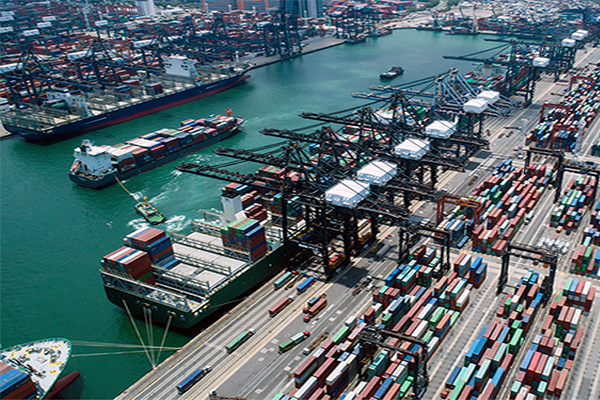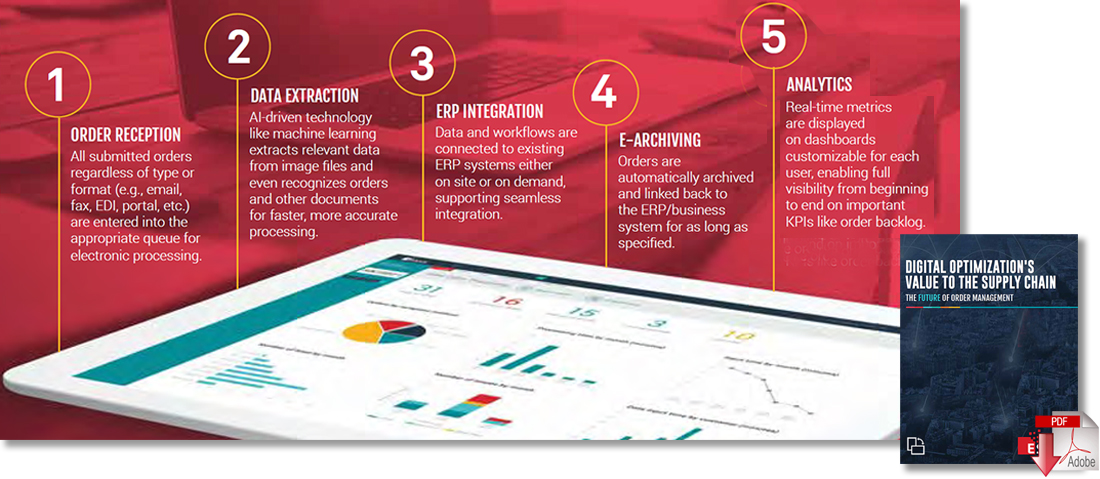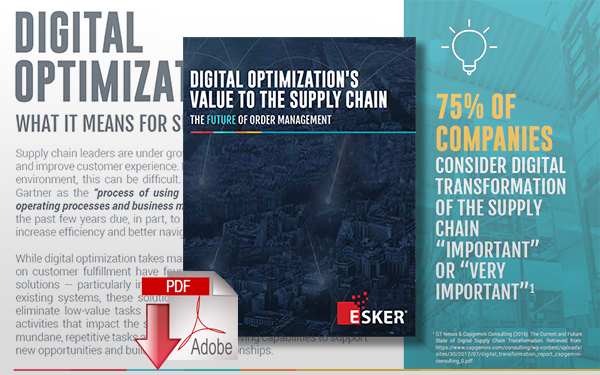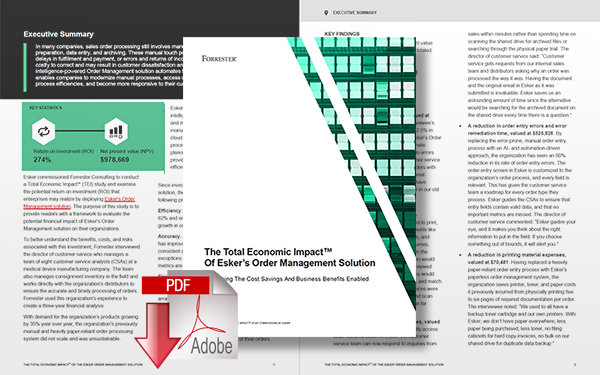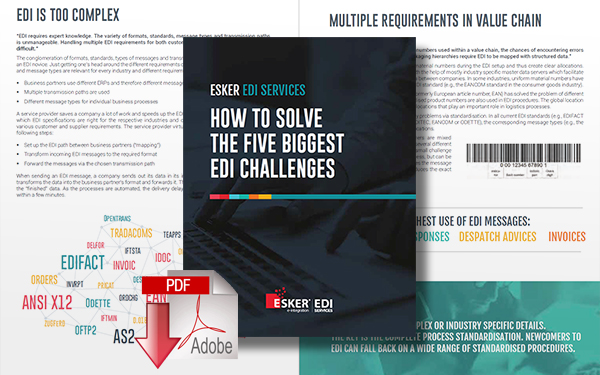Driving Supply Chain Efficiency with Digital Order Management Automation Solutions
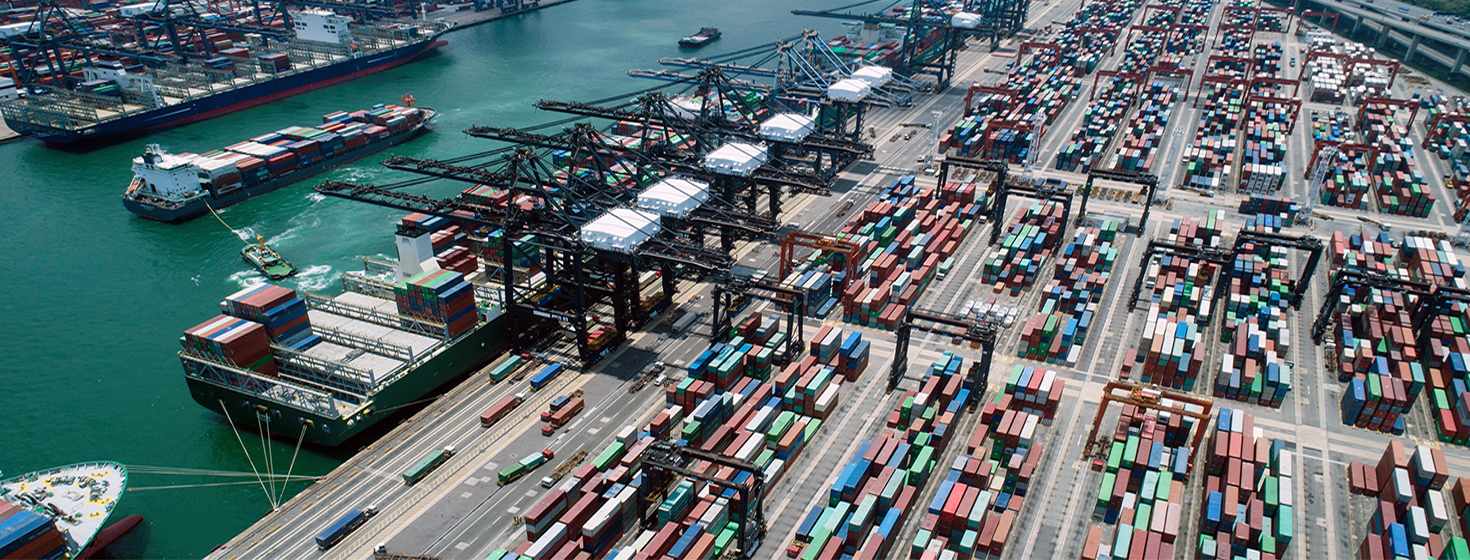
After years of supplier shortages, demand fluctuations, increased operating costs, and liquidity pinches, supply chain leaders face a crossroads - either maintain the status quo and hope for the best or reevaluate their business model to ensure they can weather the next storm.
Optimizing Back-Office Business Activities
Under “normal” circumstances, optimizing back-office business activities such as paying bills, processing orders, and collecting cash don’t top the average organization’s priority list.
But as we’re finding out now - just as we did back in the Great Recession of 2009 - no company makes it out of an economic downturn scot-free.
For many cash-compromised CFOs and COOs, their attention has rightfully turned toward minimizing the supply chain disruptions that negatively affect working capital.
According to a recent survey, nearly a quarter of executives and their companies are prepared to turn the current crisis into an opportunity with an intent to “accelerate” deal volume.
This is either a moment to seize or sustain a competitive advantage or risk damaging the financial health of your organization across the supply chain.
Our advice? Seize the opportunity now and embrace order management digital transformation.
Overcoming Supply Chain Challenges with Automation
Companies can’t afford continuous supply chain problems … literally. A single misstep can lead to serious consequences down the line.
While the challenges may be complex, most originate from a single source: poor order management. Some of the biggest supply chain challenges in a manual order management environment are:
- Incorrect or incomplete orders slow down order entry cycle time and on-time deliveries, negatively impacting cash collection and cashflow
- Lack of order visibility leaving supply chain owners at risk of missing customer SLAs, inaccurate demand planning, and no upstream visibility for distribution centers
- Low customer satisfaction from lack of transparency over their orders to delays in product delivery
- High costs resulting from errors from hand-keying in data, breaks in chain-of-custody jurisdiction, equipment, and labor, logistical issues, and time to fix them
What Automation Is and Isn’t
At the core of automation’s value is its ability to reduce or eliminate time-consuming, manual activities and give back valuable time to staff to work on more strategic tasks.
A single digital solution can automate the routing, processing, and archiving of documents and promote collaboration through interactive tools.
What Automation Is
Powered by robotic process automation (RPA) and artificial intelligence (AI), process automation drives efficiency and added value throughout organizations by:
- Eliminating manual tasks and errors resulting from human intervention
- Accelerating cycle times
- Boosting staff productivity and morale
- Enhancing visibility and analytics
- Improving customer experience
- Simplifying IT environments and complex processes
- Promoting business continuity and workplace flexibility
What Automation Isn't
There are a lot of misconceptions about the role of automation in businesses - here’s what it isn’t:
- A way to reduce headcount. Automation allows staff to be more productive and focus more on customer-centric and value-added tasks. It’s meant to reallocate staff priorities and strategic skills, not get rid of them.
- An ERP/EDI replacement. Automation fills in manual gaps that ERP/EDI systems are unable to address, maximizing existing investments.
- A one-dimensional tool. With a multitude of capabilities, AI-driven automation goes far beyond basic efficiencies to provide end-to-end benefits.
- A shortcut to success. Your company has the potential to do amazing things with automation, but only when a smart strategy is in place with the right people and processes supporting it.
ORDER MANAGEMENT AUTOMATION
Transforming The Supply Chain
Imagine consolidating all of the order management to a single, user-friendly platform without staff members having to perform repetitive, time-consuming manual tasks. Orders are automatically entered into the workflow, data accurately extracted, created in the ERP, tracked from start to finish, and electronically archived for future retrieval. That's automation in a nutshell, but here's a breakdown of what exactly it entails:
If you’re hoping to create an environment of supply chain excellence, it all starts with achieving efficiency in order management. With an order management solution, orders are automatically entered into the workflow, data is accurately extracted, created in the ERP, and tracked from start to finish, then electronically archived for future retrieval.
That’s automation in a nutshell, but here’s a breakdown of what exactly it entails and what to look for in a best-in-class order management solution.
Email triage: CSRs are often tasked with opening up every single email that comes in, determining if the email is an order, a question about a product, a status request, etc., then manually moving or forwarding that email to another team member - nbsp;all of which can easily become very repetitive and time-consuming. AI-driven email triage examines the content of the email subject, message body, and attachment so that emails can automatically be routed to the correct recipient.
Anomaly detection: Anomaly detection is based on AI and historical data. Customer usually has certain habits and they usually order similar quantities of a given item. If they suddenly send in an order with a quantity of 100, when they usually order 5, that is something a CSR might want to be aware of. Anomaly detection saves a lot of time and money by being able to identify anomalies before the order is created to prevent errors.
Information management: Industry-leading solutions offer Customer Information Management and Supplier Information Management modules that create a 360-degree view of suppliers and customer behaviors for companies. From invoices and regulatory and financial documents such as contracts to orders, invoices, payments, and claims, information is instantly and easily accessible.
ERP integration: Best-in-class automation solutions integrate with any ERP system or business application while also providing simultaneous integration with multiple ERPs. Not only does this simplify diverse environments resulting from M&A activity, it equates to easier onboarding, a simplified setup of shared services centers, and all-around better business capabilities and continuity.
Visit: Multi-ERP Integration - Connect All Your ERPs
Global management: Are your supply chain concerns international in scope? Leading automation solutions are great for global organizations thanks to supporting of multi-languages, multi-sites, multi-currencies, worldwide payment coverage, and global compliance. Their cloud-based nature enables people to work better together while giving executives the level of visibility they need at each level of the organization.
Custom dashboards: You can’t manage what you can’t measure. For an automation solution to boost supply chain management, you need information available at-a-glance. No more time wasted hunting down needed data!
On-the-go access: Especially now that remote work is the norm, a best-in-class automation solution should include a mobile app that gives customers, suppliers, and staff the freedom to place and track orders, approve invoices and easily collaborate wherever, whenever.
End-to-End Supply Chain Automation
You’re only as strong as your weakest link: One weak link within processes such as AP, order management or AR could mean the difference between boom or bust. That’s why it’s important to pursue a coordinated approach that addresses all three areas and aims to alleviate the supply chain challenges associated with each in a manual, non-automated environment.
About the Author
Taylor Bucher. As a Copywriter at Esker, Taylor uses her creative writing experience to write engaging marketing content that educates audiences on the benefits of automated business processes.
Related Resources
Digital Optimization’s Value to the Supply Chain
This guidebook was designed to help supply chain leaders focused on customer and order fulfillment evaluate the benefits of automation solutions and their necessity when beginning a digital optimization project. Download Now!
The Total Economic Impact™ of Esker’s Order Management Solution
Esker commissioned Forrester Consulting to conduct a Total Economic Impact™ study and examine the potential ROI that enterprises may achieve with Esker’s Order Management solution. Download Now!
How to Solve the 5 Biggest EDI Challenges
This white paper addresses the five biggest Electronic Data Interchange/EDI challenges and offers solutions to counter them. Download Now!
More Resources from Esker
Related Article: Is Your Ecommerce Process For Order Management Really As Automated As Possible?
Article Topics
Esker News & Resources
Supplier Management Automation 5 Interesting Facts About Automation Technology Accounts Receivable Automation Using Artificial Intelligence Rethinking Receivables 4 Reasons Supply Chain Leaders Are Investing in Order Management Automation Solutions Optimizing Cash Flow Automation in the Age of Uncertainty Supply Chain Automation: Optimizing Cash Flow in the Age of Uncertainty More EskerLatest in Supply Chain
Ask an Expert: How Shippers Can Prep for Hurricane Season Apple Accused of Multiple Human Rights Violations South Korea Finally Overtakes China in Goods Exported to U.S. UPS Struggles in First Quarter With Steep Earnings Decline How Supply Chains Are Solving Severe Workplace Shortages SAP Unveils New AI-Driven Supply Chain Innovations How Much Extra Will Consumers Pay for Sustainable Packaging? More Supply Chain